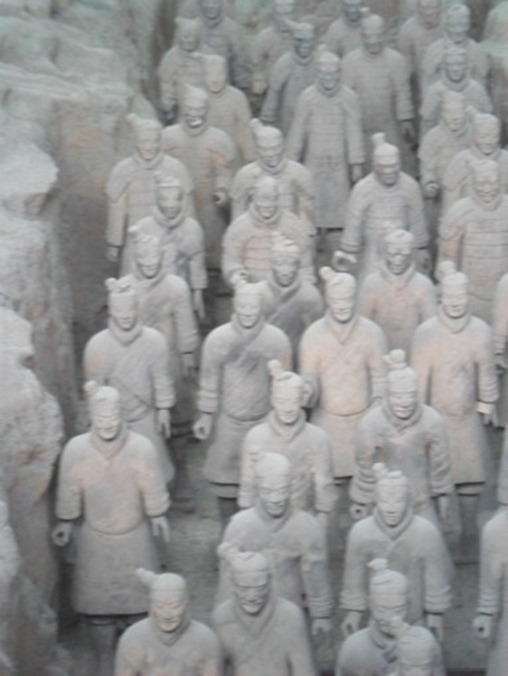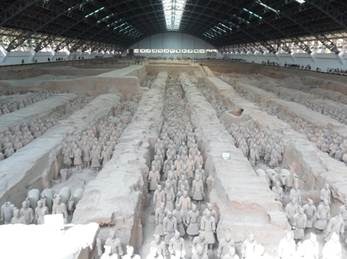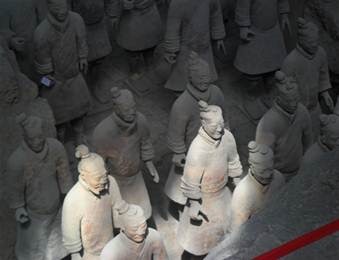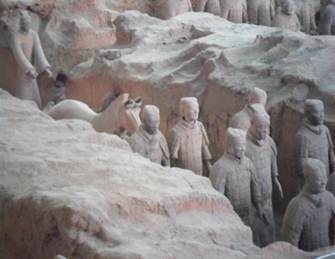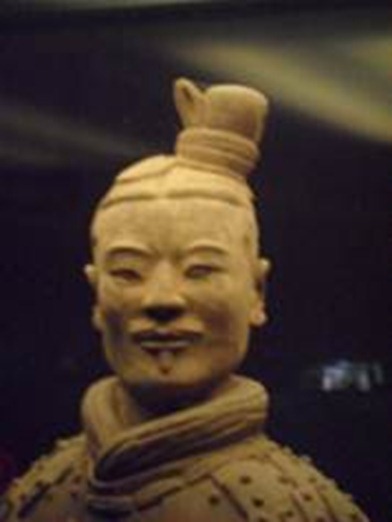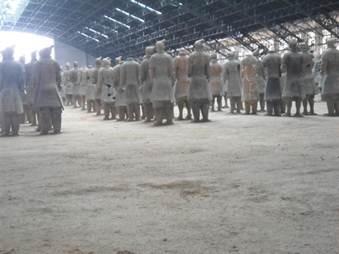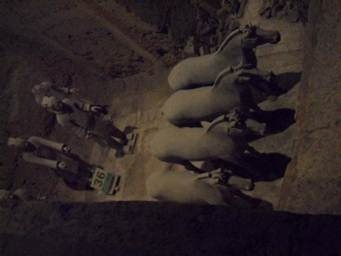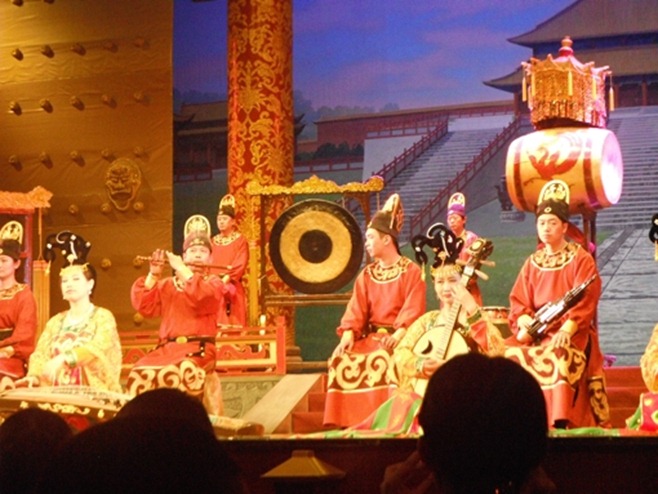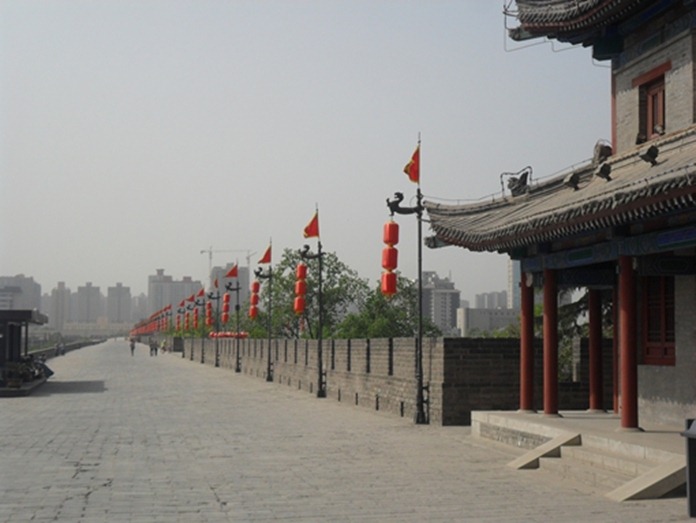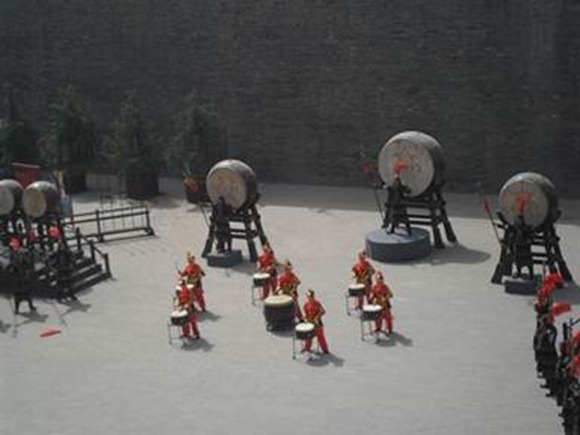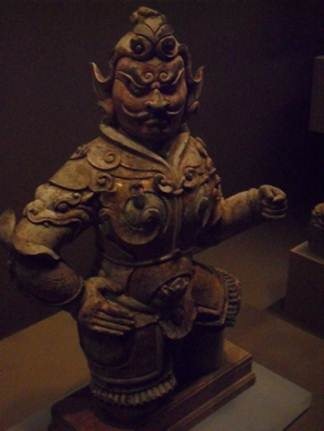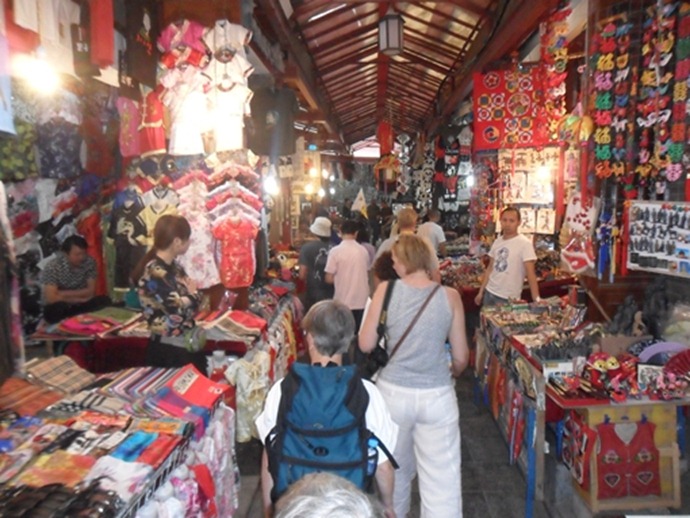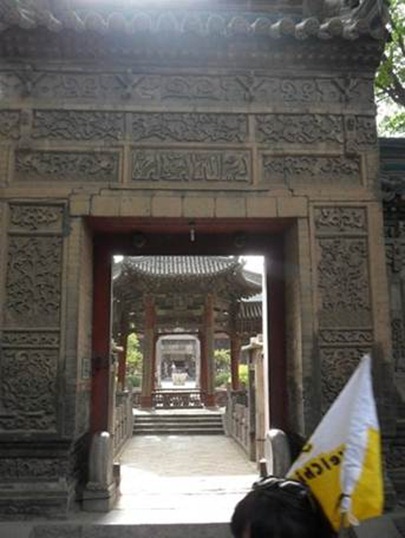China 2 - Xi'an

|
Xi’an – China 2
Try to find 2 the same, it’s impossible. Linton, Xi’an in Shaanxi province is the home of the thousands of life size warriors of the terracotta army an accidental find by a farmer digging a well which led to the most significant archaeological discovery of the 20th century. They are awe inspiring. We were flown in to Xi’an, one of the oldest cities and an ancient capital of China rich in the history of more than ten dynasties. We were met at the airport by Koko our young, smiley and bubbly guide for this part of our tour. We were taken to the Bell Tower hotel right in the centre of the city and overlooking the ancient Bell Tower itself built in 1384 during the early Ming Dynasty. Standing some 40 metres high, the tower which contains several large bronze-cast bells from the Tang Dynasty is in excellent condition and was the main symbol of Xi’an before the unearthing of the terracotta army. Not too far away there is a slightly smaller Drum Tower, the two towers stand like sentinels but there was no sound from either whilst we were there. The Bell Tower seen from our hotel. 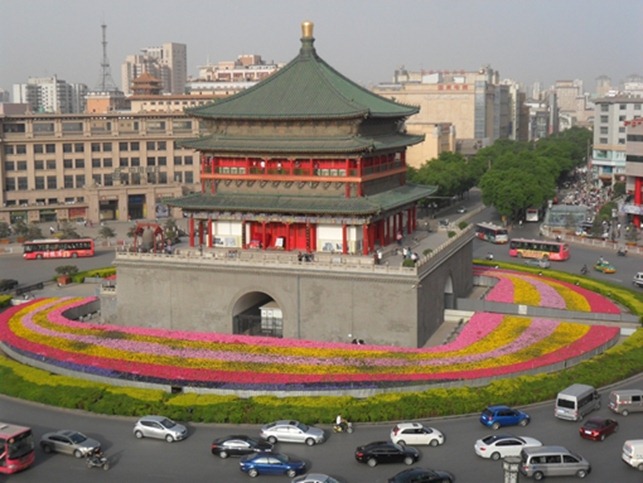
Visiting the Terracotta Warriors and Horses Museum was the highlight of our whole trip. It is established beyond doubt that these artefacts are from the Qin Dynasty (211-206 BC). The Museum is in fact a housing for the three pits discovered so far. Pit 1 houses over 6,000 soldiers and horses lined up in battle formation and said to represent the Imperial Guard of the first Emperor of all China, Qin Shi Huang, whose mausoleum is just over a kilometre away. Pit 2 has just over 1,000 figures and Pit 3 is a work in progress. The work has slowed down and a more scientific approach is being taken so that the colourful painting of costume and features can be preserved on new findings, sadly the entire colour on the existing uncovered army has disappeared following exposure to light and air – things will be handled better in the future to preserve this army of the afterlife. Pit 1
It is believed that hundreds of potters undertook this work over many years, the Emperors Mausoleum alone took 11 years to complete. It is also believed that each warrior was modelled on a living imperial guard as it would have been impossible for the potters to create so many unique postures and features.
The hairstyle indicates rank. Pit 2
Where there are horses and charioteers there were also the remains of wooden chariots which will eventually be reconstructed. Some of the warriors are of course much better preserved and more handsome than others …. 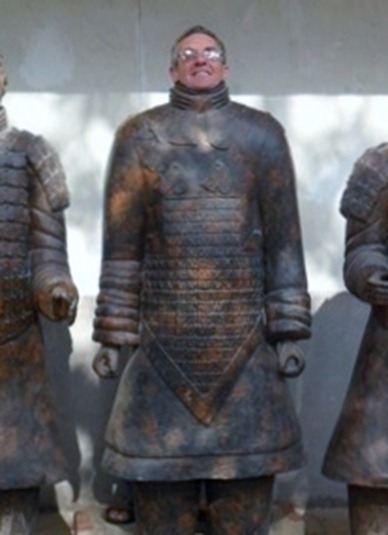 The materials and methods of making this imperial army has been well researched and our visit included time at a large pottery work shop where they were able to demonstrate just how these fabulous artefacts were constructed. The clay which is of very high quality was and still is dug from local hillsides. The original warriors were made in the same way as coil pots but with solid sculpted heads, laborious and painstaking work - today replicas of the bodies are made in moulds but we saw potters at work sculpting the heads of the warriors. The authentic open kilns were being packed carefully with replicas that were about to be fired by packing charcoal tightly around them bricking in and claying up to keep airtight then firing for 5 days or more. The kilns were really large but the originals used for the firing of the horses must have been massive. These copies are in great demand from various cultural centres, restaurants, tourists etc. In fact one of our party bought a full size model and had it shipped back to Australia; they go all over the world. ~~~~~~~~~~~ Feeling overwhelmed by what we had seen was being created in China well over 2,000 years ago we were driven off to have lunch with a local family in Xi’an. This brought us rapidly back to the present as I helped to make the small Chinese dumplings traditional to this area, which formed part of a delicious lunch. The apartment was larger than is usual as the family were from one of the groups allowed to have more than one child; it was spick and span with a well equipped kitchen but amazingly only 2 burners for what turned out to be a feast of many dishes and courses. The change of scene was just right after a morning of ancient history and our 21 century host and her friend were very hospitable. Back into history for the afternoon, China’s civilisation has so much to offer. The Small Wild Goose Pagoda (there is also a large Wild Goose Pagoda) a mere youngster having been built in 707 AD, it is 13 stories high and its 142 feet have survived over 70 earthquakes. Remarkably cracks caused by some earthquakes were pushed closed by subsequent earthquakes and it stands to tell the tale amidst over 40 acres of landscaped grounds. Our first day finished with a splendid evening being entertained at the Tang Dynasty Music and Dance Show where we sat six to a table and were served dinner before the performance. This was feast of little dumplings of every description of savoury then sweet continually presented at table in their bamboo steaming baskets – the Chinese love their food but this was extraordinary. The dancing was gorgeous with beautiful costumes and lithe, elegant performers. The music was completely unexpected with an excellent orchestra and some fascinating soloists playing instruments we have never seen before.
Best of all, however, was the comedy introduced by the orchestra and one particular soloist, this is a side of Chinese entertainment we had not been prepared for and it was a real treat at the end of an exhausting day. Koko chaperoned us back to our hotel where we happily fell into bed hoping to get enough sleep to prepare us for the morrow. ~~~~~~~~~~~ Xian is a very attractive city, with substantial 12 metre high city walls punctuated by the watch towers used when it provided a defensive fortification. At night the red lanterns are lit and the city looks wonderful.
The wall is about 12 - 14 metres wide and we were able to hire bicycles to ride part of, or in Chris’s case to complete, the 13.7 kilometre circuit. This was great fun; we heard some powerful drumming and stopped to find a full performance going on in a vast space below the wall.
These seemingly ad hoc performances happen a lot in China and we never really got to the bottom of how or why but like everything else in the public domain they are always of a high standard and very enjoyable. Elsewhere we saw these Chinese women taking their own form of communal exercise, the Chinese are incredibly sociable and these groups seem to happen anywhere that there is enough space.
The Provincial History Museum followed the bike ride allowing us time to recover and find out more about this fascinating city and other wonderful works in terracotta created in centuries BC. 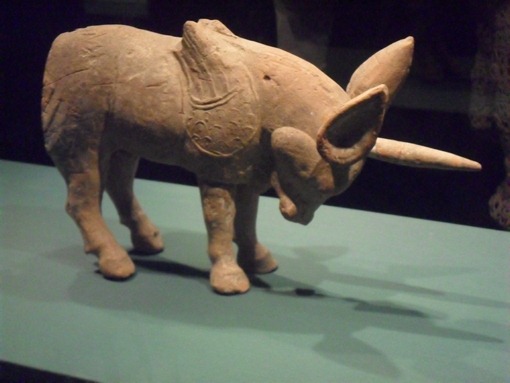 Lunch was a la carte at a rather special restaurant, until we came to China we didn’t realise just how very good Chinese food can be and had never been great fans but Chinese food here is a different experience to UK. Our final afternoon in Xi’an included a visit to the great mosque. We walked through the Muslim market to get there; riotous colours and copies of almost anything can be bought here from Dolce and Gabanna to Ralph Lauren, Nike, Gucci and Rolex as well as some very lovely Chinese art work, handicrafts and textiles.
This Great Mosque with its many gateways and courtyards is quite different from any other mosques we have seen as there is no minaret or golden dome and the greyness of age prevails. Built in 742 during the Tang Dynasty, this is one of the oldest mosques in China and has been added to over the centuries. Its construction followed the introduction of Islam into Northwest China by merchants and travellers from Persia and Afghanistan following the Silk Road during the mid-7th century and settling in China to marry women of the Han Nationality (80% of the population today is Han Chinese). Their descendants became the Chinese Muslims of today.
The peace and tranquillity was soothing after a busy day.
|
